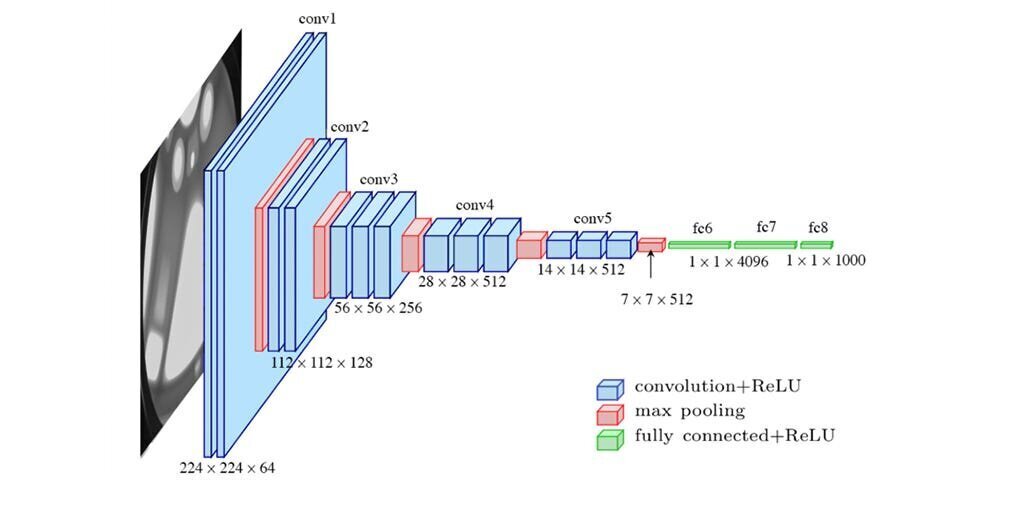VGGNet: A Milestone in Deep Learning for Computer Vision
VGGNet is a groundbreaking convolutional neural network (CNN) architecture developed by the Visual Geometry Group at the University of Oxford[1][2]. Introduced in 2014, it significantly advanced the field of computer vision with its deep and uniform structure[5].
The VGG architecture is characterized by:
- Increased depth, with VGG-16 and VGG-19 containing 16 and 19 layers respectively[1][2]
- Consistent use of small 3×3 convolutional filters throughout the network[4]
- Simplicity and uniformity in design, making it easy to implement and understand[1][5]
VGGNet’s key components include:
- Convolutional layers with ReLU activation
- Max pooling layers
- Fully connected layers at the end of the network[4][5]
The architecture’s depth allows for learning complex hierarchical representations of visual features, resulting in robust and accurate predictions[2]. VGG-16, for instance, achieved an impressive 92.7% top-5 test accuracy on the ImageNet dataset[2].
Despite its simplicity compared to more recent models, VGGNet remains popular due to its:
- Strong performance in image classification and object recognition tasks[2][4]
- Versatility and applicability to various computer vision problems[1][2]
However, VGGNet does have some limitations:
- Large model size (e.g., VGG-16 is over 533MB)[1]
- High computational requirements for training[2]
- Potential for exploding gradients due to its depth[2]
Nonetheless, VGGNet’s impact on the field of deep learning for computer vision is undeniable. It has served as a foundation for numerous subsequent architectures and continues to be a valuable tool for researchers and practitioners in the field[1][4][5].
Further Reading
1. Very Deep Convolutional Networks (VGG) Essential Guide – viso.ai
2. https://www.geeksforgeeks.org/vgg-16-cnn-model/
3. VGGNet-16 Architecture: A Complete Guide | Kaggle
4. VGG Explained | Papers With Code
5. VGG-Net Architecture Explained – GeeksforGeeks


